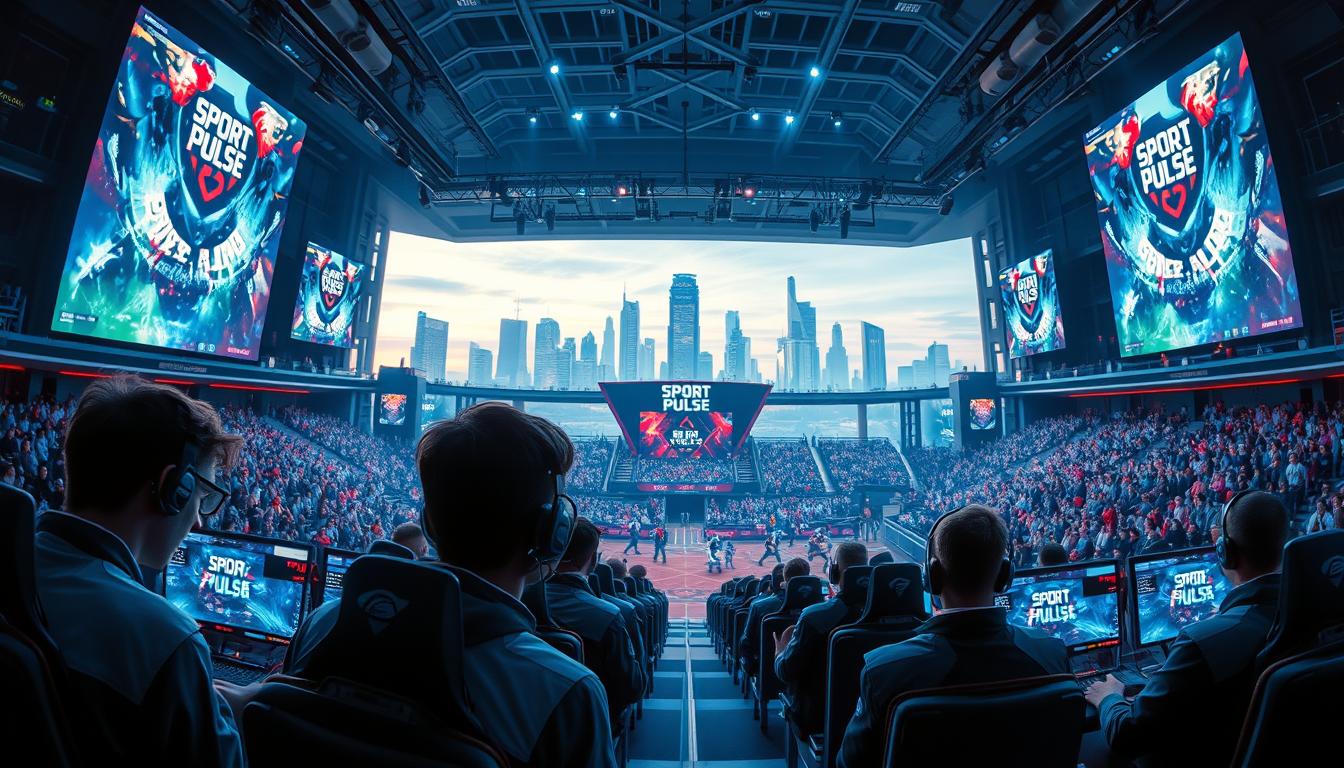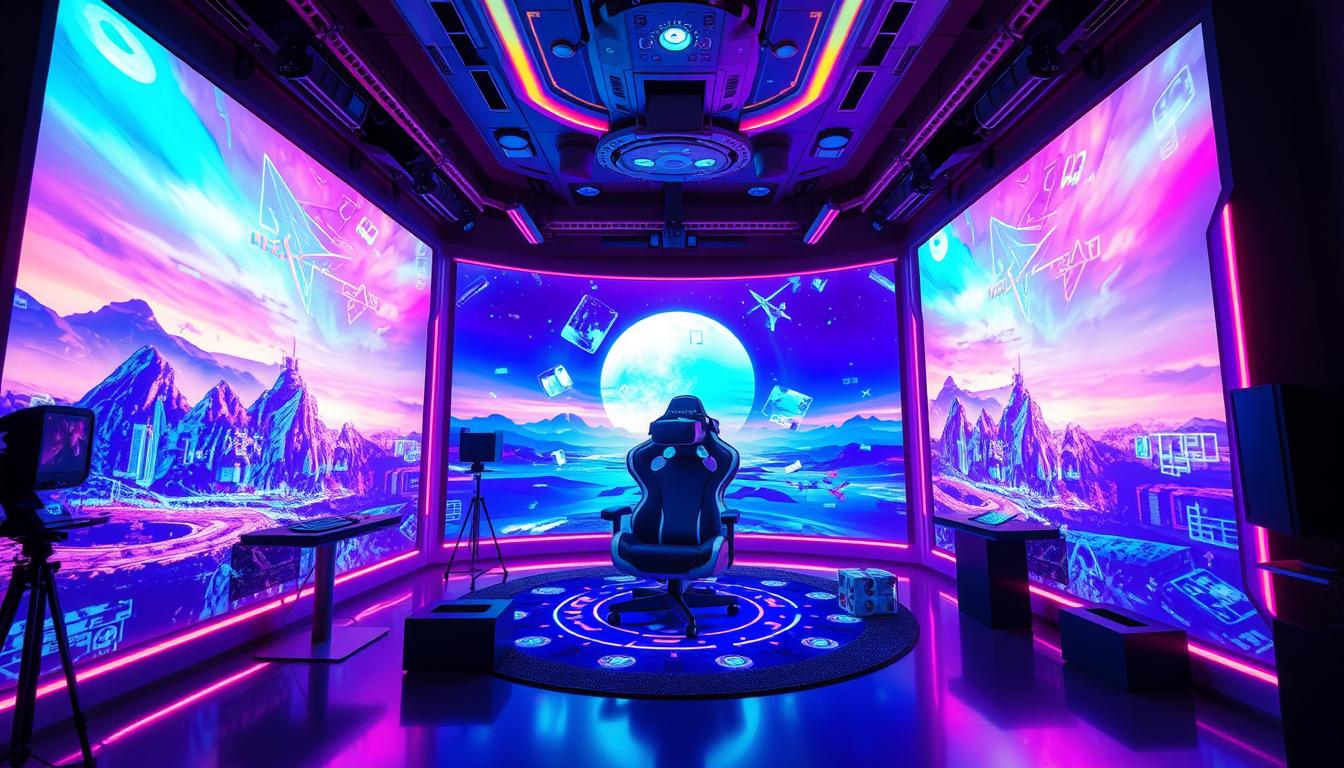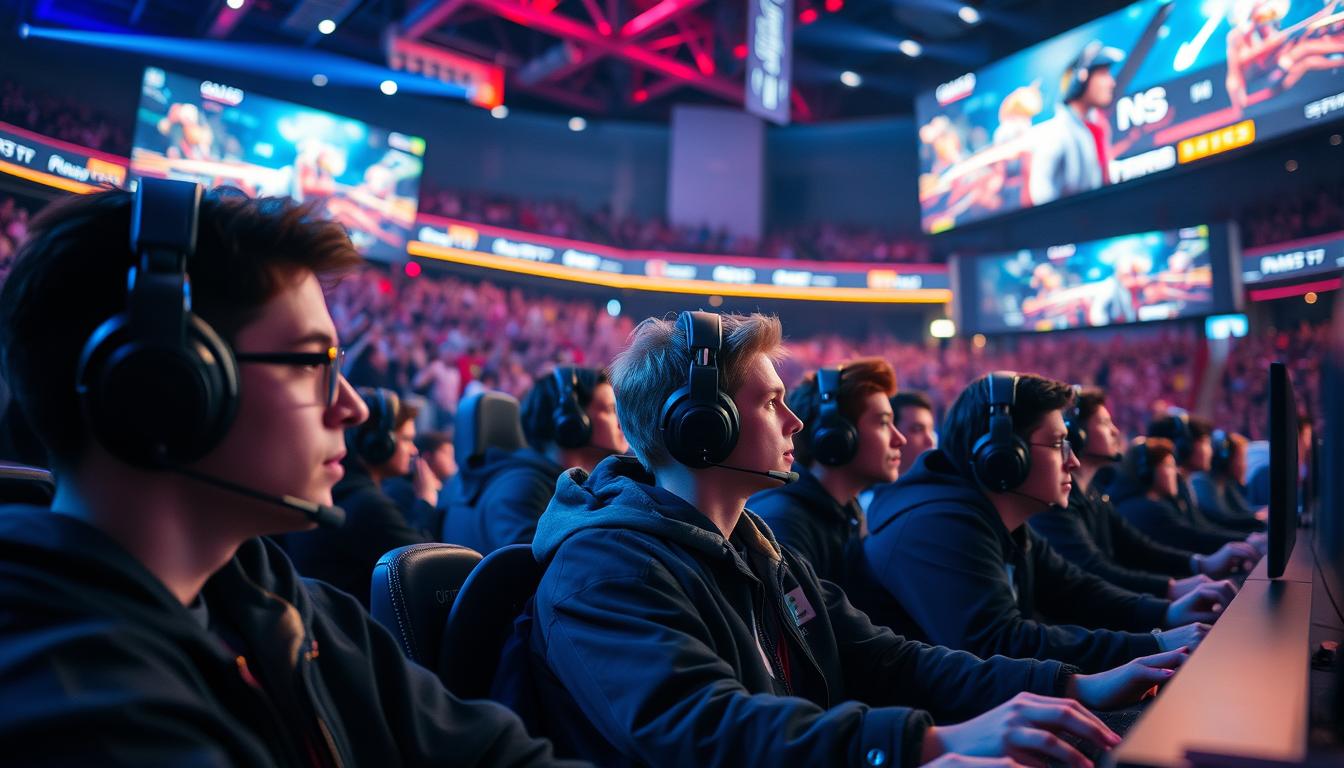This jaw-dropping statistic highlights how far gaming has evolved from a niche hobby to a global entertainment phenomenon. Over the past decade, transformative technologies have reshaped every aspect of interactive entertainment, creating a $1.79 billion industry that rivals traditional sports.
We’ve seen explosive growth fueled by razor-sharp visuals and sound systems that adapt to every move players make. Platforms like Twitch didn’t just change how we watch matches – they built communities where millions cheer for their favorite teams. As recent analysis shows, these shifts created new revenue streams through sponsorships and virtual events.
What really excites us? The ripple effect. Cloud gaming lets anyone join matches from smartphones, while AI keeps competitions fair. 5G connections eliminate lag during crucial moments. We’re not just talking better graphics – this is about redefining what games can be.
Key Takeaways
- HD visuals and responsive audio create lifelike gaming environments
- Streaming platforms drive mainstream adoption and new business models
- Global revenue growth reflects shifting entertainment preferences
- Emerging tech like VR and cloud gaming removes hardware barriers
- 5G networks enable seamless competitive experiences worldwide
Want to explore how these changes could benefit your brand? Reach out on WhatsApp: +44-7822010953. The next evolution in gaming is already here – let’s discover its potential together.
Emerging Technologies in Competitive Gaming
Modern gaming thrives on breakthroughs that redefine how players interact with virtual worlds. Three key advancements are reshaping the industry, creating richer experiences for gamers and new opportunities for developers.
Adaptive Audio and Visual Enhancements
Sound systems now react to in-game events instantly. Footsteps grow louder as enemies approach, while explosions trigger bass vibrations in headsets. Screens like those in the Acer Predator Helios 18 display ultra-crisp 4K details, powered by Nvidia’s RTX 40 Series GPUs.
Next-Generation Hardware and Streaming Platforms
New devices reduce input lag to 0.5ms – crucial for split-second decisions. Streaming services like Twitch and YouTube now support 8K broadcasts, letting fans watch tournaments in stunning clarity. This tech leap helps creators build larger audiences.
| Technology | Key Feature | Impact |
|---|---|---|
| Adaptive Audio | Real-time sound adjustments | Enhanced spatial awareness |
| 5G Networks | 1ms latency | Lag-free competitions |
| Cloud Gaming | Instant 4K streaming | Global access |
5G Connectivity and Cloud Gaming Impact
Mobile networks now deliver near-instant responses, perfect for video game technology requiring precision. Cloud platforms let players stream AAA titles on phones, breaking hardware barriers. Over 60% of pro tournaments now use cloud-based setups.
These shifts create exciting possibilities. Want to leverage them for your business? Message us on WhatsApp: +44-7822010953. Let’s turn these insights into winning strategies.
Innovative Gaming Experiences through AI and Immersive Tech
The gaming landscape is undergoing a seismic shift as smart technologies craft bespoke adventures. Players now enjoy experiences molded to their skills, while developers gain unprecedented tools to refine interactive worlds.
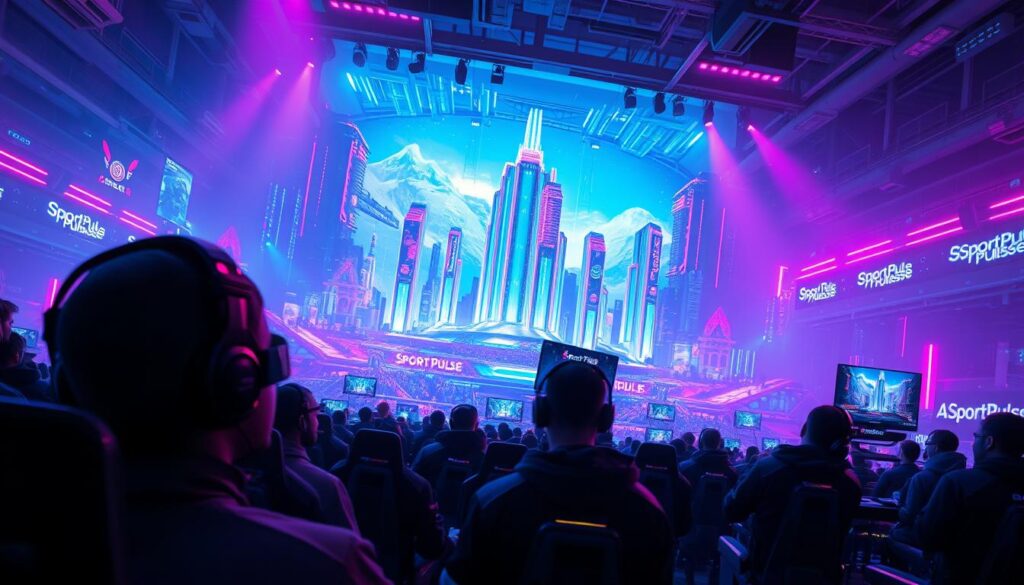
AI-Driven Personalization and In-Game Analytics
Modern systems analyze play patterns in real-time. Ubisoft’s Rainbow Six Siege uses machine learning to adjust match difficulty, keeping 78% of players engaged longer. Our team found platforms like FaceIT now offer personalized training modules using historical performance data.
These tools track everything from reaction times to strategic decisions. They create dynamic challenges that evolve with each player’s growth. For organizations, this means better talent scouting and fan engagement through tailored content.
Augmented Reality and Virtual Reality Enhancements
AR transforms living rooms into battlegrounds, while VR places players inside stadiums. Niantic’s latest AR title Monster Hunter Now blends physical exploration with cooperative hunts, mirroring Pokémon Go’s success. Meta’s Quest 3 headset delivers 4K resolution for tournament spectatorship.
These technological advancements create shared experiences for millions. Pro players use VR simulations to practice complex strategies. Fans can now watch video feeds from any player’s perspective during live matches.
Want to implement these solutions for your game development projects? Message us on WhatsApp: +44-7822010953. Let’s build tomorrow’s competitive gaming experiences today.
Exploring game-changing innovations in competitive play and esports advancements
The connection between competitors and viewers has never been more dynamic. New tools are bridging the gap between physical reactions and digital interactions, creating shared moments that resonate globally.
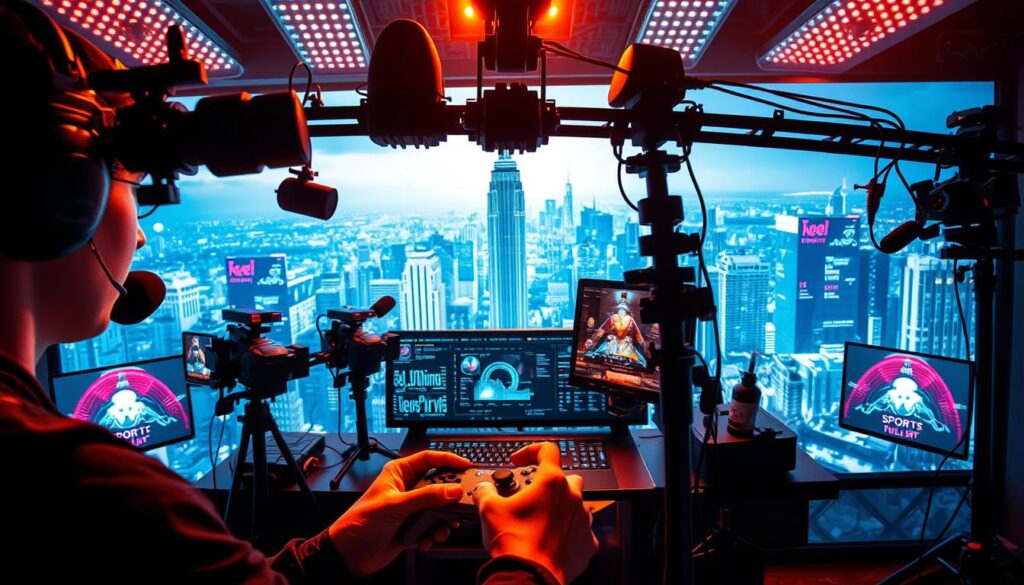
Cutting-Edge Live Streaming and Audience Engagement
Platforms like Twitch now use interactive overlays that let viewers vote on match outcomes or trigger in-game effects. During last month’s Valorant Champions Tour, real-time polls influenced bonus round rewards – a feature 83% of participants called “game-changing”.
High-definition streams now include augmented reality elements. Commentators can pull up 3D maps mid-broadcast, helping audiences visualize team strategies instantly.
Wearable Technologies for Player Health and Performance
Smart rings like Oura track heart rate variability during tournaments. Teams use this data to schedule strategic timeouts when stress levels spike. One League of Legends coach noted:
“We’ve reduced player burnout by 40% since adopting biometric monitoring.”
Dynamic In-Game Interaction and Real-Time Data Utilization
Live stats now appear as holographic displays during broadcasts. Fans see damage percentages and cooldown timers overlayed on the action. This technology turns passive viewers into tactical analysts.
Pro teams leverage instant analytics to adjust strategies between rounds. Cloud-based tools process millions of data points during matches, spotting patterns human coaches might miss.
These breakthroughs prove why esports continues to dominate entertainment. Want to implement these solutions for your next event? Message us on WhatsApp: +44-7822010953. Let’s create unforgettable experiences together.
Conclusion
The future of interactive entertainment is unfolding before our eyes. We’ve seen how AI-driven analytics refine strategies, while 5G networks erase geographical barriers for players worldwide. Wearable tech keeps teams at peak performance, and streaming platforms like Twitch turn spectators into active participants.
These advancements create unprecedented opportunities. Pro gamers now train using virtual reality simulations that mirror real tournaments. Viewers enjoy personalized broadcasts with stats overlayed in real-time. For brands, this means tapping into a $1.79 billion industry where entertainment and technology collide.
What’s next? The lines between physical and digital experiences will keep blurring. Cloud gaming lets anyone join elite matches from smartphones, while AR transforms local parks into global arenas. We’re witnessing a cultural shift where teams aren’t just athletes – they’re content creators and community leaders.
Stay ahead by embracing these changes. Whether you’re building training tools or crafting immersive events, the tools exist to captivate audiences. Ready to explore? Message us on WhatsApp: +44-7822010953. Let’s shape tomorrow’s gaming landscape together.
